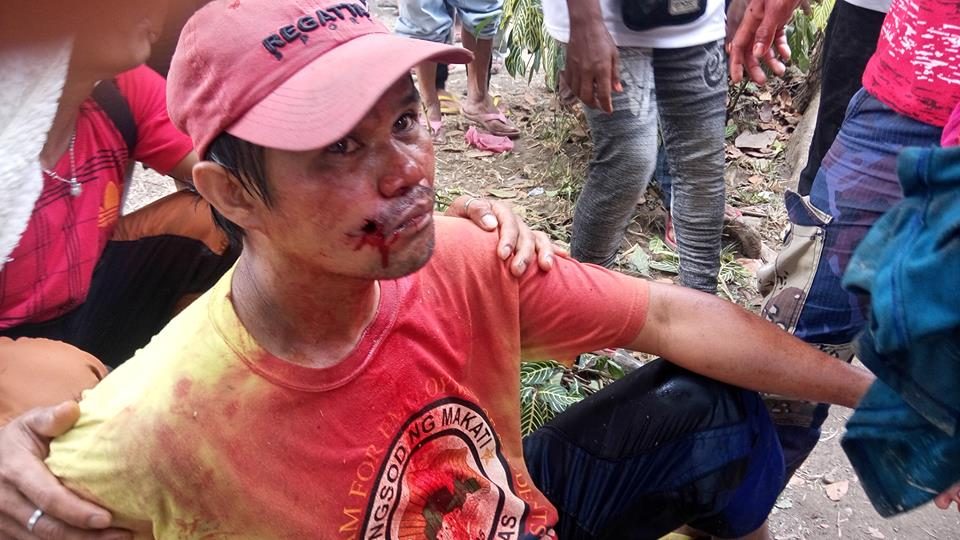SUMMARY
This is AI generated summarization, which may have errors. For context, always refer to the full article.

I was compelled to admonish a friend who established her career via the human rights community on what I thought was a very irresponsible finger-pointing to the communists for allegedly instigating the farmers’ protest in Kidapawan City that led to the loss of lives.
After all, no less than the police spokesman admited that they have yet to complete their investigation. But I am equally disappointed in the way politicians seized the incident to immediately blame the national government without any appeal for prudence to authorities, protesters and the general public.
A basic protocol in human rights advocacy is to get all the facts as much as possible, verify these, vet these against what the international standards and national law prescribe, and then to make a conclusion.
In real life – and in a very polarized political environment – this is a tall order.
Impartiality and independence in human rights advocacy remains in the realm of aspiration in the Philippines. And understandably so when the basic principles of universality and indivisibility of rights by the State remains at the rhetorical level.
Cynicism is the easy way out in times like this. It is so cheap and I won’t have it.
So how am I, a bystander of this tragic incident via the social media, to respond to the deluge of news feeds, opinions, emotional outpourings, frustrations, accusations that are taking over my “space”?
My human rights instincts make the task of verification daunting. I could resort to self-censorship and silence, but I know that I have something to contribute because I have a few things to share from my repository of knowledge about police conduct.
First, what do I know?
1. There was a protest by farmers in Cotabato (and outlying provinces) since Wednesday, March 30, demanding for emergency support from the government because of HUNGER caused by El Niño’s effects on their food production.
2. There were negotiations between the farmers and the local government (to whom budget has been devolved by the national government and which has to decide on resource allocation). In the end, they were promised 3 kilos of rice each quarter. My household consumption of rice is 1 kilo a day (feeding 4 adults and 2 kids). So imagine what the government’s promise of 3 kilos per 3 months can do to address the emergency hunger issue of the protesting farmers.
3. There was a standstill when the farmers considered the local government’s offer not acceptable.
4. On Friday morning, April 1, one video from the side of the farmers showed a police officer in the protest site giving protesters ultimatum. The protesters were shouting, saying they preferred to speak only to the governor.
5. Another footage showed the start of the dispersal. At first, it showed policemen with truncheons and shields pushing back the protesters to break their ranks. The protesters resisted. Even after the protest line had been broken up, some ran while others fought back with stones and sticks. We saw in a video footage a male protester falling down and a team of police that kept on hitting him with their truncheons. And then gunfire was heard. We saw a footage of authorities in military gear holding long arms and firing at the direction of the demonstrators, many of whom were still throwing stones or whatever they could grab. This violent turnout of events later caused the death of 2 farmers and the wounding of scores of others from both sides.
6. Were the demonstrators also firing back at the authorities? This has to be established. The police spokesman reported that they had two men in serious condition. What were their injuries?
7. After the violent dispersal, many protesters sought refuge in the local United Methodist Church. A letter from the provincial governor addressed to the head of the church and threatening the latter for providing refuge to the protesters went viral. In the evening news, the police and the governor justified the violent dispersal (but not the gunshots), citing public interest. The permit to demonstrate had lapsed on Friday morning and the police was not extending the deadline, thus the order to disperse. By nightfall, reports started coming in from netizens in the area that the police had arrived to surround the church. No one from the outside could get access to the protesters inside, depriving them of food. At some point, power was cut off. TV news coverage showed the police and the governor justifying the dispersal because public interest was already severely affected by the standstill.
7. On Saturday morning, April 2, the police served a search warrant to church authorities. No firearms were found in the area.
Basic principles

What do international human rights standards tell me about Kidapawan?
My starting point is to establish State accountability. And in this case, I draw guidance from the Basic Principles on the Use of Firearms and Force by Law Enforcement and the Code of Conduct for Law Enforcement Officials.
The practice of people taking to the streets to express their feelings and opinions publicly on any topic that is close to their hearts is common enough in most countries in the world. Although such events are not necessarily violent, the occasions that tend to stand out in people’s minds are, unfortunately, those that are characterized by physical confrontation (among demonstrators themselves and between demonstrators and law enforcement officials).
As this includes situations in which law enforcement officials might resort to force, the principles governing the use of force in the specific context of public assemblies will first be broadly addressed.
Management of public assemblies not only requires decisions relating to the use of force; it also involves constant efforts to balance a whole range of rights that may be affected when people decide to gather in public. The maintenance of peace and order should be the overarching goal in the management of public assemblies. Consequently, prevention of violence, de-escalation when violence occurs and, as far as possible, avoiding the use of force should be guiding concepts.
National law determines under what circumstances a public assembly is to be considered lawful or unlawful. It should furthermore determine the possible restrictions that authorities can impose on the conduct of a public assembly. Such legal provisions need to comply with the country’s obligations under international law. Whatever decision the authorities take, to allow a demonstration or an assembly to take place or, conversely, to prohibit it, has to be taken in accordance with this legal framework, and in particular with Article 21 of the International Covenant on Civil and Political Rights (ICCPR):
“The right of peaceful assembly shall be recognized. No restrictions may be placed on the exercise of this right other than those imposed in conformity with the law and which are necessary in a democratic society in the interests of national security or public safety, public order , the protection of public health or morals or the protection of the right and freedoms of others.”
Whatever decision is taken, there are a number of rights, rules and standards that authorities and, in particular, law enforcement officials must respect when managing public assemblies, including when taking the decision to disperse an assembly or not.
Law enforcement officials called upon to put any such restriction into effect in any situation must be done in strict respect of the principles of legality, necessity, proportionality and accountability. A lawful assembly, i.e. an assembly that takes place in full respect of the provisions of national law, can only be restricted if other legal provisions authorize such restrictions, which should be both necessary and proportionate.
Such restrictions may refer, for instance, to the geographical area in which the assembly will be taking place (for example, in order to ensure access to hospitals or to protect children going to and coming from school) or to the time (for example, limiting the number of hours that a major road can be occupied by the assembly). These are referred to as “time, place and manner restrictions.”
Force as last resort
Furthermore, where assemblies are lawful, law enforcement officials are duty bound to protect them, e.g. against violent counter-demonstrations. When managing public assemblies, law enforcement agencies should seek to avoid the use of force, which should remain the last resort. The principle of necessity gives priority to the peaceful settlements of conflicts and to the use of methods of persuasion, negotiation and mediation in order to limit recourse to the use of force (Another important distinction must be made between violent and nonviolent assemblies.)
This becomes relevant in two sets of circumstances, as discussed below.
In the case of an “unlawful assembly”, i.e. an assembly that does not take place in accordance with the provisions of national law (for example, if a notice period has not been respected or if authorization has not been obtained), may nevertheless be completely peaceful. Thus, in application of the principle of proportionality, law enforcement officials have to balance carefully the public interest in dispersing such an unlawful assembly against the possible negative consequences of its dispersion (see BPUFF No. 13).
The fact that an assembly, though unlawful, takes place peacefully may lead to a decision not to disperse it and, in particular, not to use force to that end, the aim being to prevent an unnecessary and potentially dangerous escalation of the situation. Such a decision does not prevent the subsequent prosecution of those participating in an unlawful event.
However, in the interest of protecting other important rights (including the life, physical integrity and property of people who are not involved in the assembly), the recommended course of action may be to allow the assembly itself to proceed.
Missing pieces
Were the Kidapawan farmers’ protest “violent”? An assembly that is or becomes violent may lead to a decision on the part of the authorities to disperse it in order to stop the violence – even though the assembly may have been lawful in the beginning.
However, it should be noted that the presence of a limited number of violent protesters does not necessarily make the whole assembly violent. In application of the principles of necessity and proportionality, law enforcement officials will therefore have to consider the possibility of dealing with such violent individuals before resorting to the dispersion of the assembly as a whole.
I would not venture into making any conclusion yet at this point.
There are so many pieces in the jigsaw puzzle on accountability – including the accountability of the leadership of the protesting farmers – that are still missing.
What worries me now while dwelling on this is the drowning of the legitimate demand of the protesting farmers: their need for food on the table, their hunger caused by the drought. – Rappler.com
The author is a former staff member of the London headquarters of Amnesty International and is currently involved in human rights advocacy and capacity building for women and minority groups.
Add a comment
How does this make you feel?
There are no comments yet. Add your comment to start the conversation.